Been driving the all new Suzuki Baleno this past week. Suzuki as a manufacturer in SA, has made great strides, and has now broken numerous sales records. They have of late, been in the top three sales wise, which is huge for them. The Swift is one of the biggest seller’s in passenger sales as well. Fortunately for them, stock does not seem to be a problem, which has plagued other manufacturer’s recently.

But on to the Baleno. It comes in four variants, and boasts the new design language named Crafted Futurism. The Baleno is a great looking car, and the design language speaks to this with new design elements, including a wider front air intake, a three-dimensional grille design and flowing body lines that connect with the chrome brightwork in one continuous swoop, that not only create a fresh new look for the Baleno, but also signals what is to come for other Suzuki models.
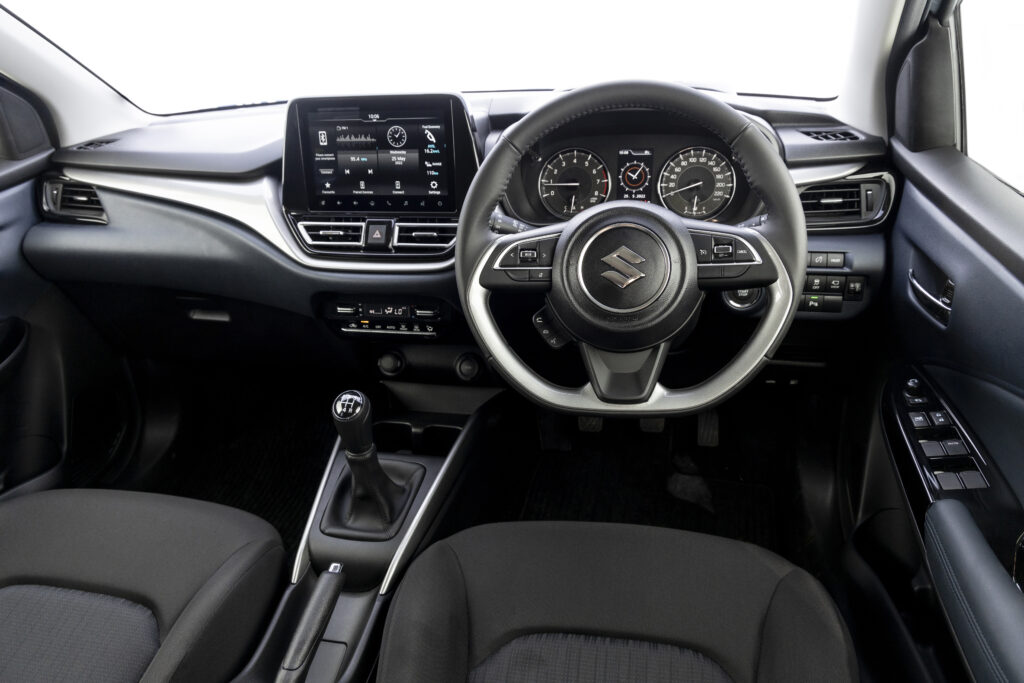
Cue the cabin and we have a multi-layered dashboard creates the impression of space. There are also more comfortable and contoured seats, which are both functional and visually appealing, and with higher-grade cloth upholstery.
So let’s unpack the four variants a bit, two models- the GL & THE GLX, with auto & manual in both.
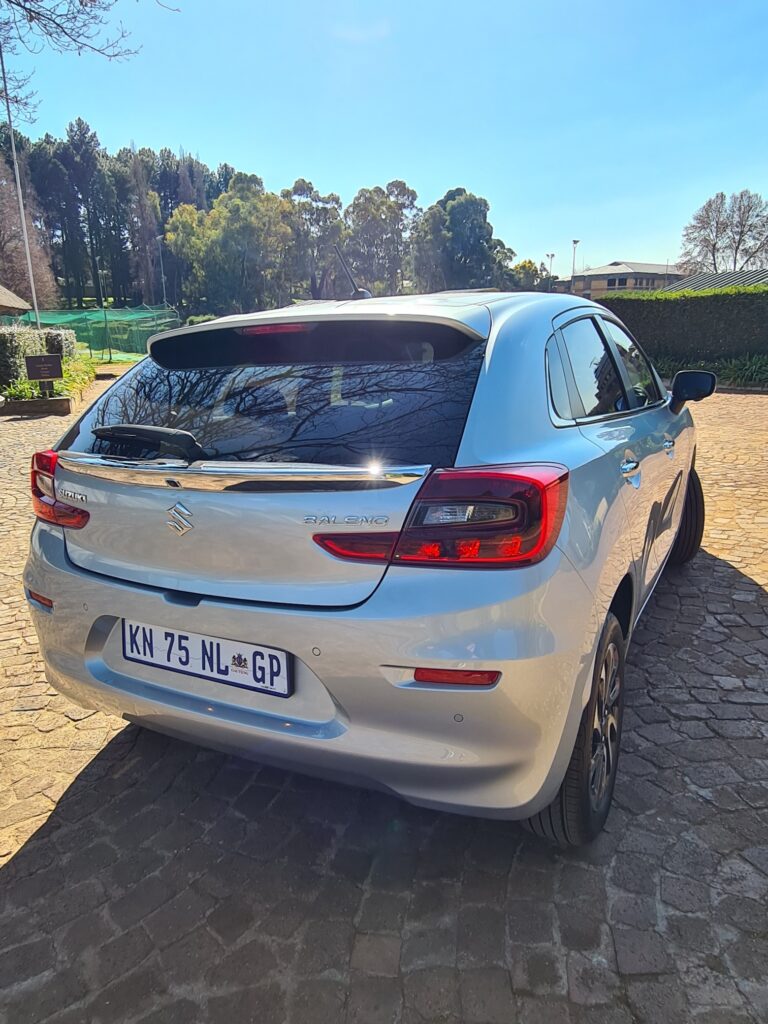
Suzuki Baleno GL – Auto and Manual
In the Suzuki Baleno GL manual and automatic versions, Suzuki has added climate control with rear air vents instead of the previously used air conditioning system. The vents are mounted at the back of the new centre armrest with a storage box between the front occupants.
The GL further benefits from the addition of electrically adjustable and foldable side mirrors, cruise control and three USB ports (a Type A port in front and a Type A and Type C port in the rear).
Other standard features on this model include remote central locking, rear parking sensors, a 12V accessory socket and of course the much-loved 7” full-colour Suzuki infotainment system with Bluetooth connectivity.
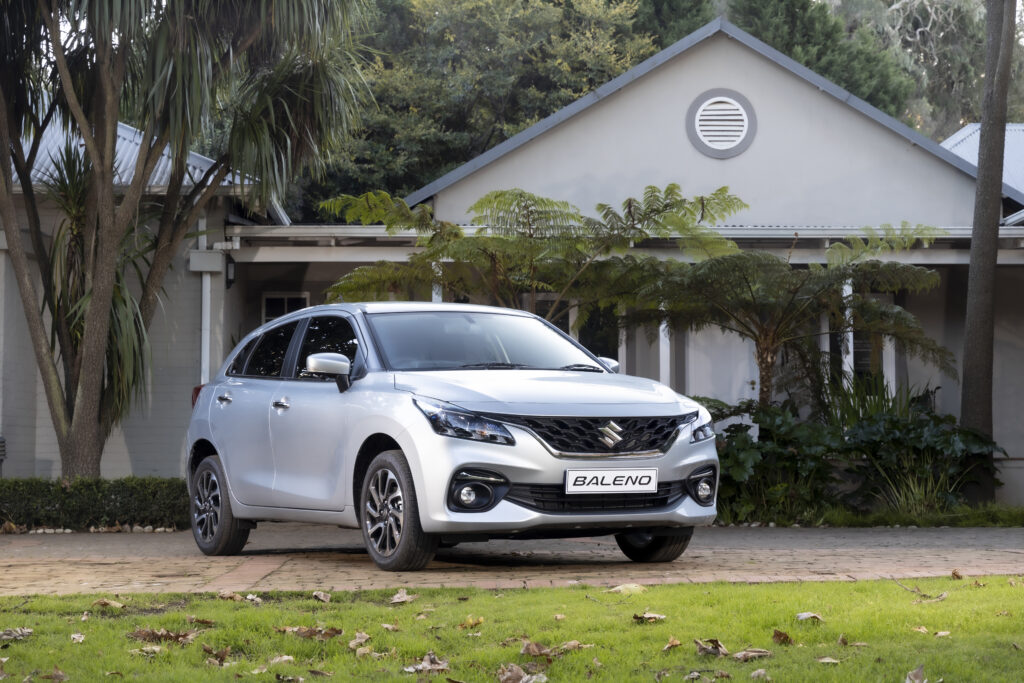
The infotainment system will display information from the in-built reverse camera, and it has Apple CarPlay and Android Auto built in. The system can be controlled from the controls on the leather-clad steering wheel.
Safety and security in the GL specification level are also very well taken care of with dual front airbags, electronic stability programme (ESP), ISOFIX child seat anchors and an alarm and immobiliser as standard. Hill Hold Assistance is also standard on the Baleno, starting at the entry-level GL specification.
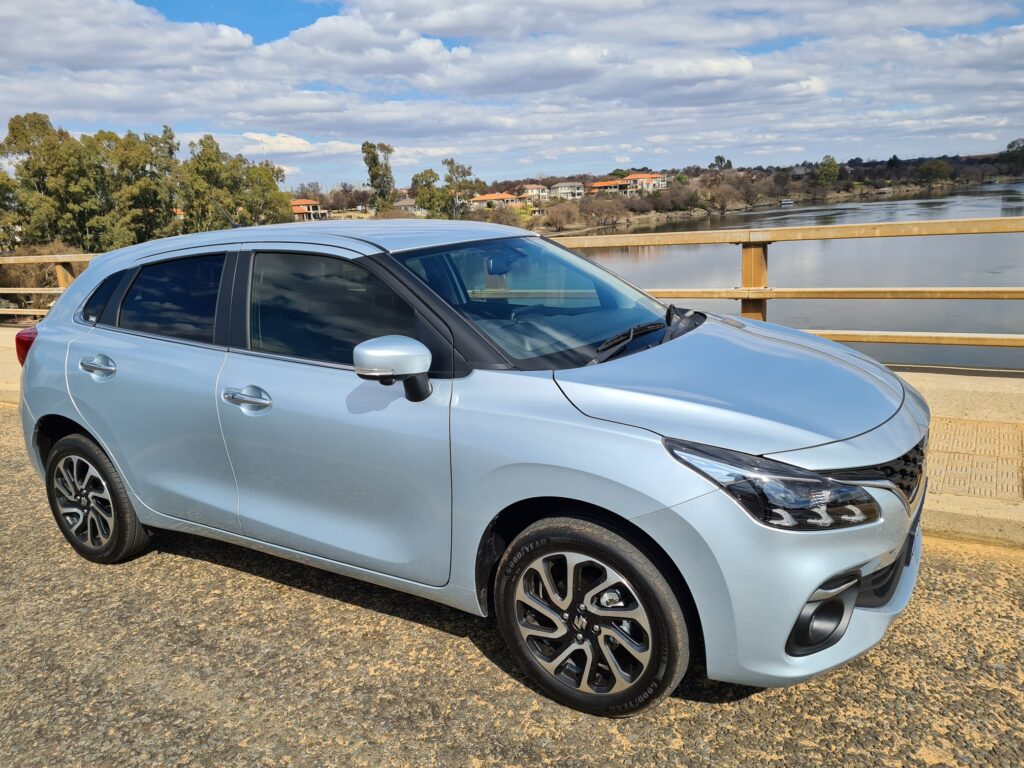
Suzuki Baleno GLX – Auto and Manual
In the Suzuki Baleno GLX, the number of luxuries is boosted to a level previously unheard of in this segment including first-in-segment features such as a head-up display, a full 360-degree Round View Monitor with side, front and rear-mounted cameras that display a bird’s eye view of the vehicle’s surroundings when parking or manoeuvring at low speeds.
The GLX further has LED projector-style headlamps and LED daytime running lights and 16” polished alloy wheels.
Inside the GLX model, there is a very long list of standard specifications.
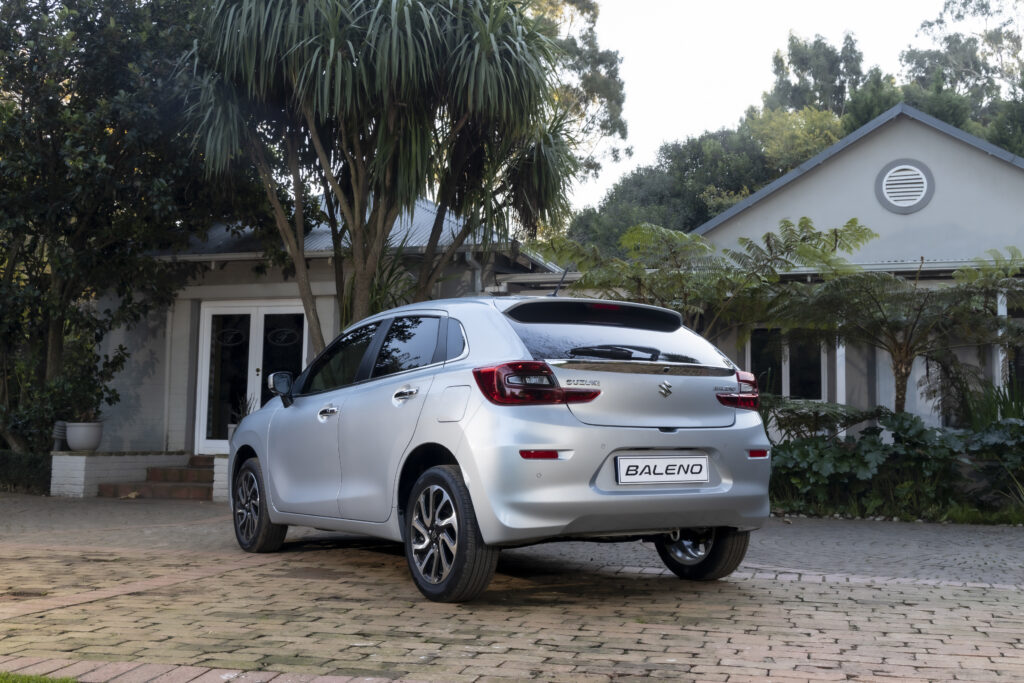
The new Head-Up Display offers an array of information from a pop-up screen than neatly retracts into the dashboard when not used.
The 7” infotainment system found in the Baleno GL models is further replaced with a high-resolution 9” system with Apple CarPlay and Android Auto. The system also has added Smart Vehicle Alerts and of course Bluetooth connectivity with steering controls.
Additional is the four more airbags (front side airbags and full-length curtain airbags) for a total of six. GLX buyers also receive privacy glass as standard, and the rear-view mirror dims automatically.
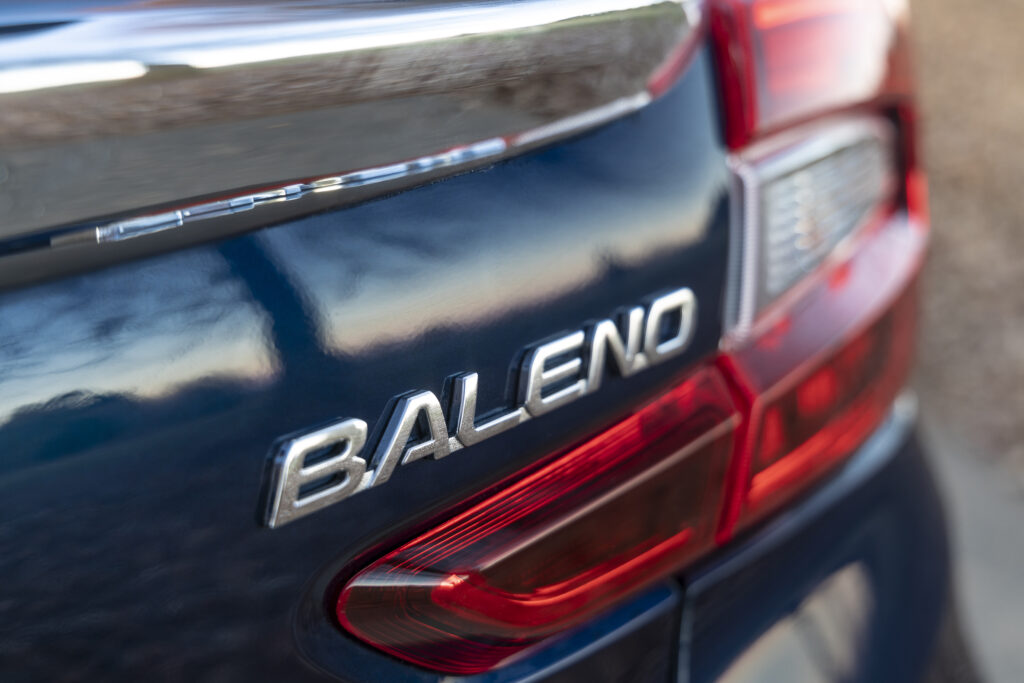
Engine From 1.4 to 1.5 litres
The Suzuki Baleno benefits from a new 1.5 L powerful K15B petrol engine with variable valve timing, multi-point fuel injection and 16 valves per cylinder.
This engine, which is also used in the Suzuki-built Toyota Starlet, Urban Cruiser and Rumion, and in Suzuki models such as the Jimny and Ertiga delivers a sprightly 77 kW at 6 000 rpm and 138 Nm of torque at 4 400 rpm.
Having driven the Starlet, and the Baleno, this engine delivers an easy drive, it is coupled to a 5-speed manual gearbox, which I drove in both, and it was easy driving.
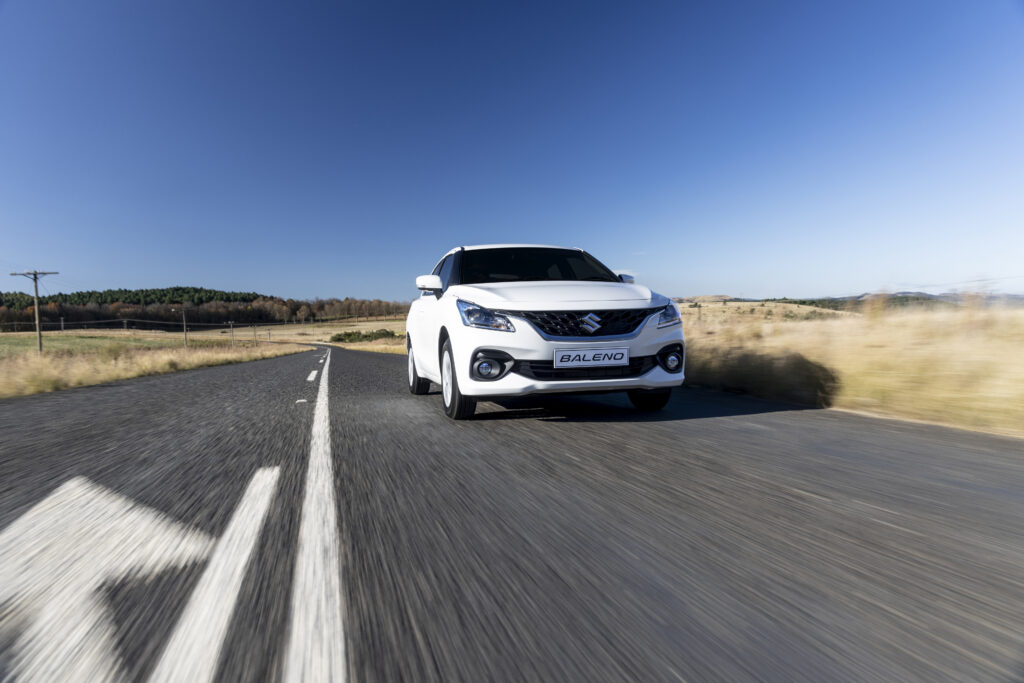
The Baleno has a claimed average fuel consumption rating of 5.4l/100km for the five speed manual transmission models and 5.7l/100km in the four speed automatic transmission models. I got 6.1 L/100km combined
Every new Baleno will be sold with Suzuki’s popular 5-year / 200 000 km promotional mechanical warranty. This includes unlimited roadside assistance for the same period.
Pricing includes a 4-year / 60 000 km service plan and an anti-corrosion warranty of 6 years and unlimited kilometres.
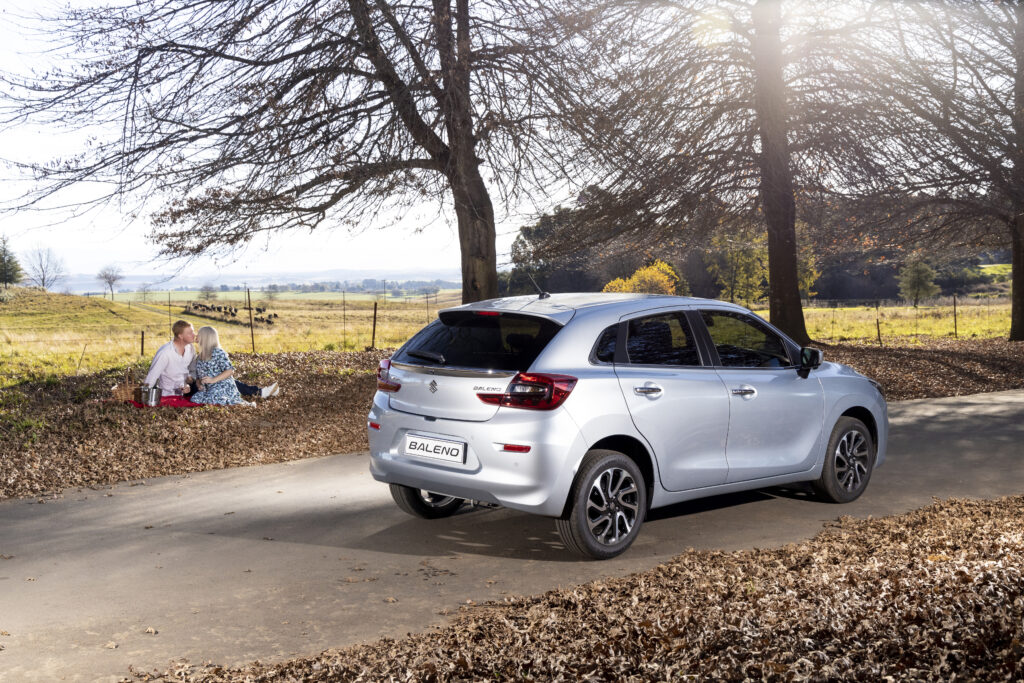
In summation, the Baleno adds another string to a formidable bow for Suzuki. They should have no problem finding buyers for these cars. If anything, the JV with Toyota has benefited Suzuki tremendously, and buyers don’t seem concerned which model they buy.
In saying that, Suzuki have a fantastic stable of models to suit a number of different buyers, and they have the highly popular Jimny has well. It really is a golden time for this manufacturer.
